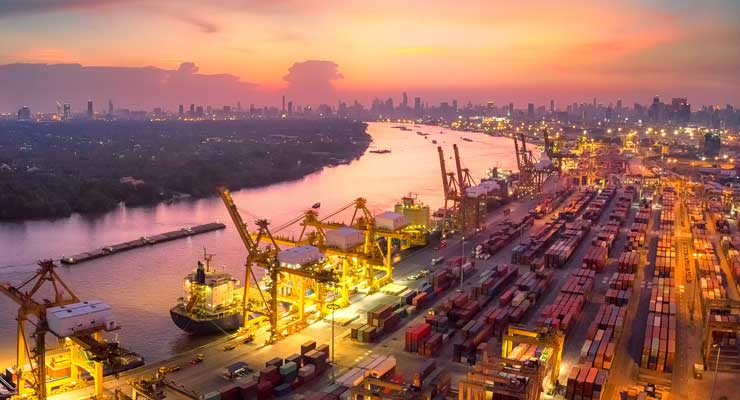
- The larger the second-round effects, the greater the risk of a sustained wage-price spiral through a feedback loop between wages and prices.
- “There is just not enough depot space to accommodate all the containers.”
- We may not begin to see a more normalized and balanced supply chain until 2024.
Multiple attempts have been made to increase domestic manufacturing in the US, but the ripple effects of the pandemic continue to throw curveballs at businesses everywhere, making it difficult to keep this up. S&P Global’s U.S. composite purchasing managers index — which measures activity in both the manufacturing and services sectors — indicated that the US economy contracted at a slower pace in September compared to the prior month.
Inflation is Impacting More Than Just Products
Rising inflationary pressures are not only impacting the cost of materials for domestic manufacturing, but also wage increases. According to Lewis Black, CEO of Almonty Industries, increases in pay typically happen with any inflation event, but when companies increase employee wages, they also fuel inflation. On the other hand, if you do not increase wages, you could end up with potential disruptions in working, which costs the company money as well.
These are what economists call second-round effects, and they can in turn further raise prices. If this feedback is large and sustained, a wage-price spiral could emerge, with wage growth and inflation rising over an extended period. The larger the second-round effects, the greater the risk of a sustained wage-price spiral through a feedback loop between wages and prices. If large and sustained, oil price shocks could fuel persistent rises in inflation and inflation expectations, which should be countered by a monetary policy response, according to the International Monetary Fund.
Insufficient Depot Space to Accommodate High Inventories
Another issue plaguing the industry is a major slump in the order-to-inventory ratio, with high inventories but slower demands. According to the November edition of the Container xChange Forecaster, this leaves a rippling effect across different stages of container logistics. One of the glaring issues which will impact container repositioning and container movement well into the year 2023 is insufficient depot space.
“There is just not enough depot space to accommodate all the containers. With the further release of container inventory into the market (e.g., from the disposal of leasing fleets), there will be added pressure on depots in the coming months. This will be a key challenge for some and a competitive advantage for others in the business, especially in China because of the empty container repositioning there,” Christian Roeloffs, co-founder and CEO of Container xChange, said in a release sent to Wholesale Central.
A More Stabilized Supply Chain May Come in 2024
“At the moment, consumer spending is not slowing down at all, which is rather unusual given the rising rates,” Black said. “All credit card companies are saying spending is continuing, which bodes well for manufacturers. Even though they are seeing their margins being eaten into because of inflation, we expect a strong 2023 in terms of stability. The real pain will come towards the middle half of next year because as the activity starts to return, raw material prices will continue to spike in price.”
Black says that we may not begin to see a more normalized and balanced supply chain until 2024. As long as consumer spending does not decrease, we will begin to see that balance and a global normalization in trade. There are still programs to bring manufacturing back into the US, such as the Department of Energy awarding $2.8 billion in grants from the Bipartisan Infrastructure Law to 20 manufacturing and processing companies for projects across 12 states. President Biden also announced the American Battery Materials Initiative, a new effort to mobilize the entire government in securing a reliable and sustainable supply of critical minerals used for power, electricity, and electric vehicles (EVs). Together, these actions will improve America’s energy independence, strengthen national security, support good-paying jobs across battery supply chains, and lower costs for working families.

